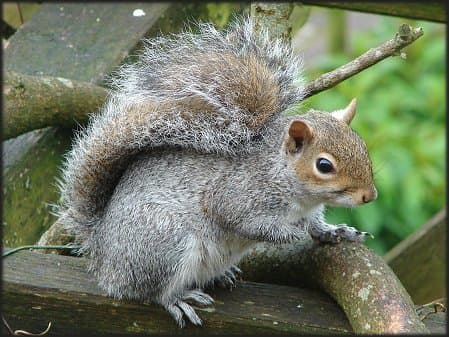 |
There are a few reasons as to why I decided to do this, and one of them is because originally page #12 was going to be covered by the Adder, however since I thought that I could do nothing more with the animal, I decided that it perhaps would be of more benefit to just scrap original ideas for page #12, and just cover a new animal, something different to all of the others.
Out of the four illustrations that I created, I had clear favourites in my eyes, which were the latter three illustrations featured above.
I decided to use these particular images for the design of the two pages.
I began working on page #12.
To start I enhanced the black point of the illustration after scanning the original piece in using the printer, due to the laser often having a tendency for washing out a lot of the tone, and placed it squarely onto an A5 template page, in a similar fashion to many of my other pages.
I thought that due to the shape and style of this illustration, it would work being central to the page, which will attract focus straight to the animal.
The simple white background allows for the Bass to really stand out, and this makes it look rather contemporary in design and layout.
I couldn't seem to find any folklore on this particular species of Bass, and I found it very hard to come across anything remotely interesting to me. Because of this, I decided to instead do what I have done with a few of the animals that I have featured perviously, and focus on traits.
I wanted to make it clear that this animal was introduced to the UK, as to not confuse the animal with being a 100% British native species.
Since it was introduced from the Americas, I thought about highlighting this in some way.
Species that are often introduced are referred to as introduced species, and in some cases when animals are introduced they disturb the natural balance between other animals and their relationships.
These types of animals are often called invasive species, and an example of one particular animal that fits this criteria, the the Grey Squirrel, which originates from North America.
 |
| http://www.new-forest-national-park.com/image-files/grey-squirrel.jpg < Image reference at this link. |
The term invader sprung to mind, as a way to reference the Bass' introduction into the country.
I also thought about the reasons as to why the Fish was popular amongst fishermen in the UK, and it is mainly the fact that it is deemed a trophy fish amongst hobbyists, and it is also a tasty meal according to many.
I came up with the term, 'Tasty Invader', which I thought summed up the Bass in a simple, 'roll off the tongue' way.
 |
| The painted typography. |
By changing the colour of the typography to that of the American flag, I thought it would allow the language to reflect upon this.
Red and blue is the classic American colour, so I edited the CYMK of the typography in order to make them appear red and blue.
 |
| http://upload.wikimedia.org/wikipedia/commons/thumb/1/1a/US_flag_48_stars.svg/220px-US_flag_48_stars.svg.png < image reference at this link. |
 |
| The final page #12th design. |
I wanted to use another two of my favourite illustrations from my collection of Bass drawings, and one that was featured earlier above.
Since I wanted these two pages to work together, I scanned the illustrations into photoshop, enhanced the black point of both, and then placed the images in the centre of the page, lined up, as you can see below.
Since I had already included wording in page #12, I decided to leave this page to focus entirely on the illustration.
Thomas.






No comments:
Post a Comment